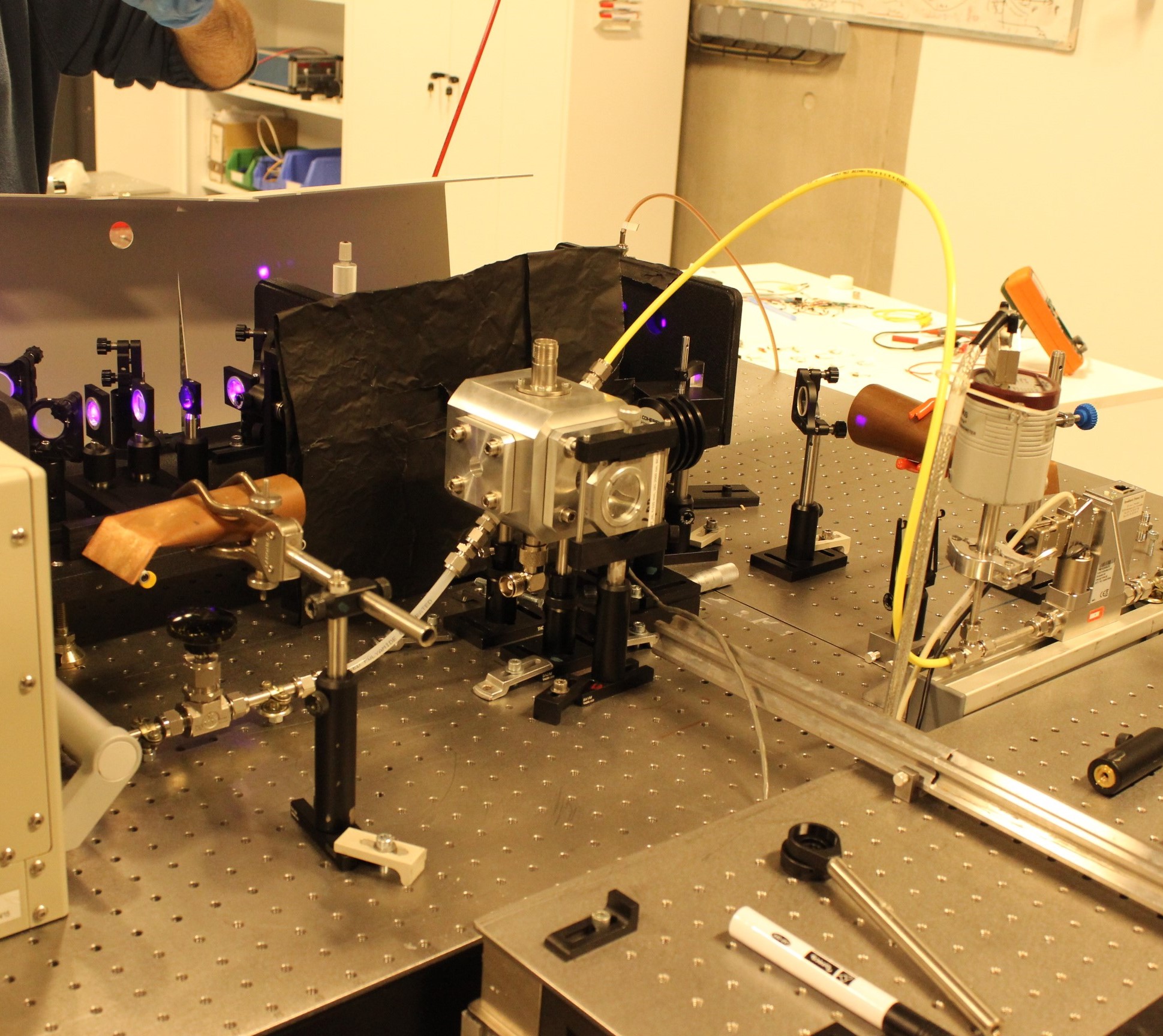Experimental Facilities

ICP Torch
The CentraleSupelec plasma torch facility is a 50 kW inductively coupled (ICP) torch. The plasma torch is very stable and can operate continuously. It provides a plasma at atmospheric pressure. The plasma nozzle exit diameter varies from 1 to 7 cm. The plasma velocity at the exit of the torch then varies from about 10 to 1000 m/s at the center and provides heat fluxes ranging from 1 to 20 MW/m².
Different gases can be injected in the torch to simulate different atmospheric entries: Air (Earth), CO2 (Mars), N2/CH4 (Titan), H2/He (Jupiter)… Optical diagnostics are used to measure the radiation and the densities of relevant species at the exit of the plasma torch, such as Optical Emission, Spontaneus Raman and Thomson spectroscopy.
Different collaborations exist with agencies or companies over the world: ESA, NASA, JAXA, ArianeGroup, University of Queensland, University of Minnesota and others.
Femtosecond Laser Facility
Our team is a member of the DIAGPLAS research task force. As such, our team is part of the LaSIPS labex and received grants from the SESAME program. The purpose of DIAGPLAS was to help laboratories equip themselves with new diagnostics and to offer access to those tools to partner laboratories.
Our team thus acquired a Solstice Ace femtosecond-pulsed laser for our Advanced Diagnostic Platform. This laser delivers a 100-fs laser pulse between 810 and 830 nm at rate of 1 kHz and with a temporally and spatially averaged power of 5 W. With the addition of optical frequency multiplier stages comprising non-linear crystals, we are able to access up to the 4th harmonic of this pulse (middle UV range). This process as for instance used to obtain a pulse of 206.65 nm in order to induce a two-photo laser induced fluorescence (fs-TALIF) in atomic nitrogen1.
1. Ciprian Dumitrache, Arnaud Gallant, Gabi Stancu, Christophe Laux. Ground-State Atomic Nitrogen Measurements using fs-TALIF in High-Pressure NRP Discharges. AIAA Scitech 2020 Forum, Jan 2020, Orlando, France. https://doi.org/10.2514/6.2020-1745

Crédits photos : Cécile Oriot - CentraleSupélec



